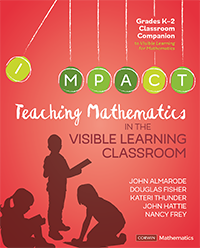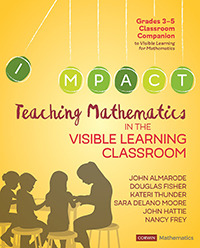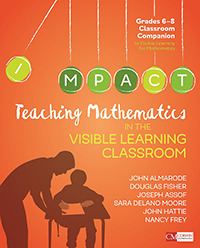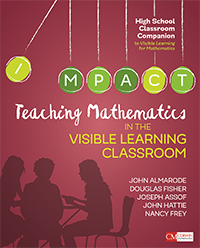You are here
Visible Learning for Mathematics
Maximize student achievement in mathematics with Visible LearningTM
Visible Learning is based on one simple belief: every student should experience at least one year’s growth over the course of one school year.
Visible Learning translates the groundbreaking Visible Learning research by Professor John Hattie into a practical model of inquiry and evaluation.
What Is Visible Learning for Mathematics?
In this video, Professor Hattie, Doug Fisher, Nancy Frey and Linda Gojak introduce Visible Learning research and look at:
- What does the Visible Learning framework help teachers do?
- How does the Visible Learning framework apply to mathematics?
- How does formative assessment make learning visible?
Research tells us which mathematical teaching practices are effective at times. Now we know which are the most effective when they’re the most effective, and how they can be used to foster student-centered, visible learning. The suite of Visible Learning for Mathematics resources helps you to:
- plan lessons with clear learning intentions and success criteria
- choose which teaching strategies to use when based on learning goals and feedback
- foster metacognition so that students can own their own learning journeys.
Get started on your Visible Learning for Mathematics journey
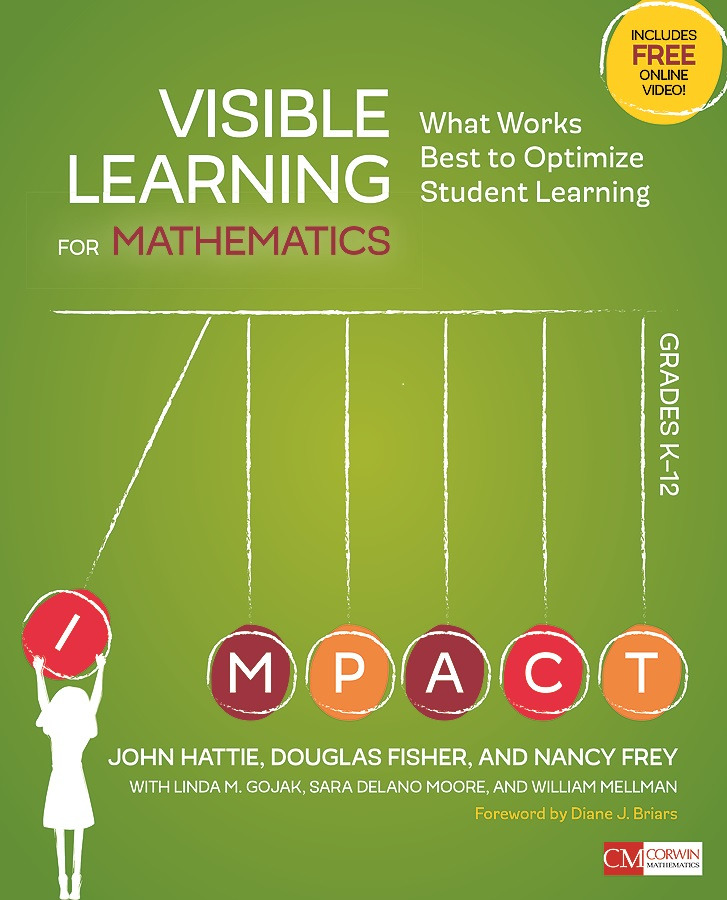 Chapter by chapter, and equipped with video clips, planning tools, rubrics, and templates, the bestselling Visible Learning for Mathematics gives you the foundation on which instructional strategies to use at each phase of the learning cycle:
Chapter by chapter, and equipped with video clips, planning tools, rubrics, and templates, the bestselling Visible Learning for Mathematics gives you the foundation on which instructional strategies to use at each phase of the learning cycle:
Surface learning phase: When—through carefully constructed experiences—students explore new concepts and make connections to procedural skills and vocabulary that give shape to developing conceptual understandings.
Deep learning phase: When—through the solving of rich high-cognitive tasks and rigorous discussion—students make connections among conceptual ideas, form mathematical generalizations, and apply and practice procedural skills with fluency.
Transfer phase: When students can independently think through more complex mathematics, and can plan, investigate, and elaborate as they apply what they know to new mathematical situations.
Take Visible Learning for Mathematics one step further…
Introducing the new companions to the bestselling Visible Learning for Mathematics!
How can you best help students to become assessment-capable visible learners in mathematics? These books answer that question by showing Visible Learning strategies in action in high-impact mathematics instruction. Walk in the shoes of teachers as they mix and match strategies, tasks, and assessments, demonstrating that it’s not only what works, but when. A decision-making matrix and grade-leveled examples help you leverage the most effective teaching practices at the most effective time to meet the surface, deep, and transfer learning needs of every young student. You’ll learn to:
- Articulate clear learning intentions and success criteria at surface, deep, and transfer levels
- Employ evidence to guide students along the path of becoming metacognitive and self-directed mathematics achievers
- Use formative assessments to track what students understand, what they don’t, and why
- Select the right task for the conceptual, procedural, or application emphasis you want, ensuring the task is for the right phase of learning
- Adjust the difficulty and complexity of any task to meet the needs of all learners
